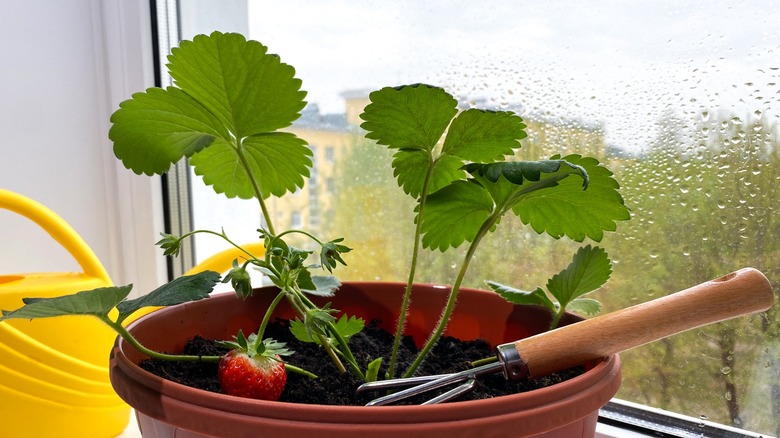Yes, You Can Grow Strawberries Indoors - Here's How To Do It
Strawberries are among the best-selling berries and are only growing in popularity, which begs the question: Why aren't you growing these juicy delights indoors so you can enjoy snacking on fresh strawberries year round? Since commercially grown strawberries are among produce most heavily treated with chemical fertilizers and pesticides, the homegrown version is quite appealing. At least 200 known pest species are attracted to strawberries, but the plants will encounter few of them indoors, nor will they encounter the deer that so love to munch strawberry foliage. Strawberries are not hard to grow indoors, but a few tips will support your success.
First, be aware that strawberries love sun and need at least six hours of direct sun daily, a requirement that may be hard to meet in a indoor setting. Thus, the best strawberry plant varieties for a successful indoor harvest are those known as day neutral, meaning they are not sensitive to day length and can keep flowering and fruiting as long as temperatures are moderate. Optimal growth occurs between 45 and 85 degrees Farenheit. Day-neutral strawberry varieties include Monterey, San Andreas, and Albion.
The other important thing to know about growing strawberries indoors is that, since they need pollination to set fruit, you'll need to manually pollinate them every two to three days when they're flowering. Gently transfer pollen by brushing from the outer edges of the flower toward the center, using a soft brush or cotton swab to help move the pollen onto the flower's pistils.
Special tips for producing strawberries indoors
Let's take a look at how to grow and care for a strawberry plant indoors. Strawberries have shallow roots, so they don't need a deep pot — 6 to 8 inches will suffice. Another option is a traditional multi-plant strawberry pot that is tiered with little compartments for each plant. You'll need to decide whether to grow from seed, bare roots, or plants. Strawberries grown from seed may not fruit until their second year, so bare roots or plants will result in faster gratification. Fill the pot most of the way with organic soil and moisten. If using seeds, place them on the soil, lightly covering with a dusting of soil; then water again. Place on a sunny windowsill and water every three days. Keep the soil most, but don't overwater it. Plants and bare roots will need less water than seeds. Fertilize monthly with a controlled-release fertilizer, but step up fertilization to alternate weeks once the plant flowers.
You can also grow hydroponic strawberries indoors. Hydroponics are grown without soil in nutrient-rich water. Strawberry varieties well-suited to hydroponic growing include Albion, Seascape, Quinault, Tribute, and Mara de Bois. You'll find a variety of commercial and DIY hydoponic systems to choose from. Once you have plants growing, read our guide to the best way to harvest strawberries for juicy and delicious fruits.

